I have already said in the previous sequel of my travel stories from Mexico and Central America that León Viejo used to be the capital of the Spanish territories in Nicaragua. The city was founded under the name of León in 1524, but because of a couple of powerful earthquakes the residents held a referendum after the second earthquake in 1610 and decided to abandon this location, while moving the capital with the same name León some 30 km farther to the west.
The 1610 earthquake did not completely destroy the city, but it significantly damaged its buildings. This was followed by the ash regularly spewed by the nearby volcano Momotombo and so the remains of the city got fully covered. It was only in 1967 that the archaeologists managed to locate the buried remains of the buildings and the site got a completely appropriate name of León Viejo which means Old León.
The original discovery was followed up by excavations and over time the site was inscribed on the UNESCO’s World Heritage List on account of its archaeological and historical significance. Namely, this is one of the oldest Spanish colonial settlements in Americas and since it did not develop after 1610, the researchers can see quite clearly the social and economic structure of the Spanish colonial Empire, as well as the town-planning structure of a colonial city in the 16th century and at the beginning of the 17th century. What is also very important is that a large number of local population lived in the city and thus the archaeologists also discover artefacts that are not Spanish by their origin. Moreover, at its peak the city had around 15000 inhabitants, only around 200 of them were Spaniards. At the time of the earthquake that was “just too much” there were only a dozen of Spanish households in the city, so the local referendum on the move was not so difficult to organise, since nobody asks the local population anything anyway.
When one enters the site, the first structure that one comes across is the Cathedral of Holy Mary of Grace (Catedral de Santa María de Gracia). The cathedral was built from 1525 to 1553.
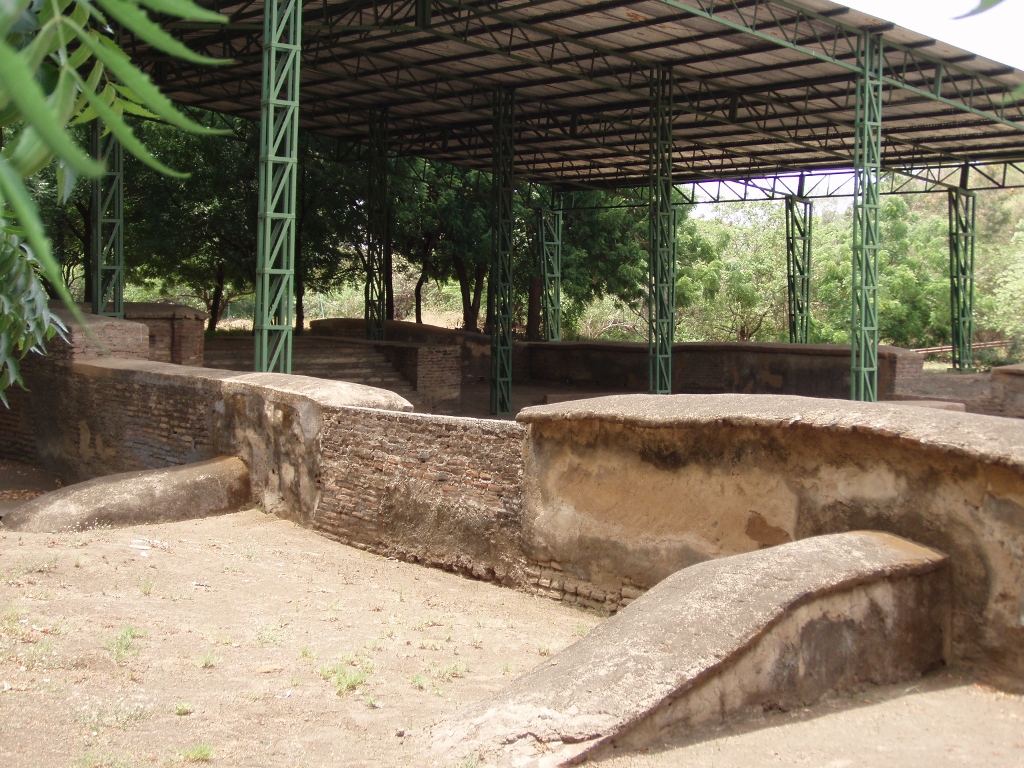 Remains of the Cathedral in León Viejo
Remains of the Cathedral in León Viejo
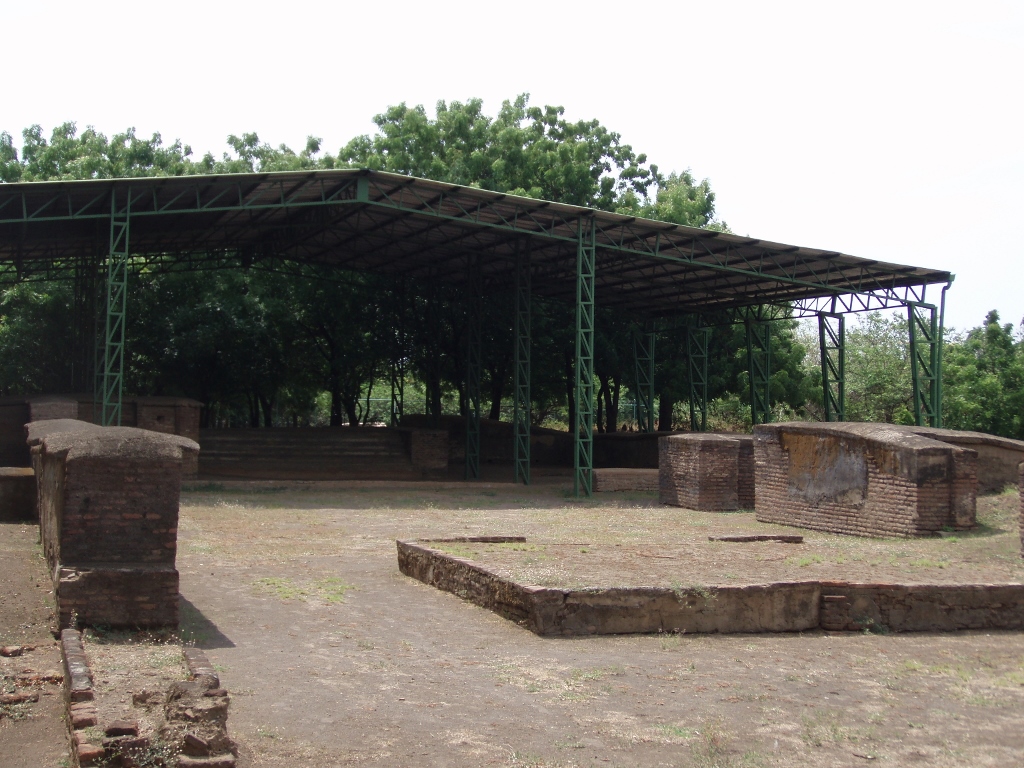 Remains of the Cathedral in León Viejo
Remains of the Cathedral in León Viejo
Right here in front of the remains of the Cathedral, there is also a monument to the founder of the historically important Nicaraguan cities of León and Granada – Francisco Hernández de Córdoba. A couple of years after he had founded León, in 1526, he was executed for alleged treason precisely here in the square in front of the Cathedral in León Viejo. In 2000, the archaeologists found his headless body buried at the monastery of La Merced and so his remains were transferred here and buried under the monument together with the remains of several other locally important individuals. Since de Córdoba is considered not only the founder of the above-mentioned two cities, but also of Nicaragua itself, it is in his honour that the Nicaraguan currency is named – the córdoba.
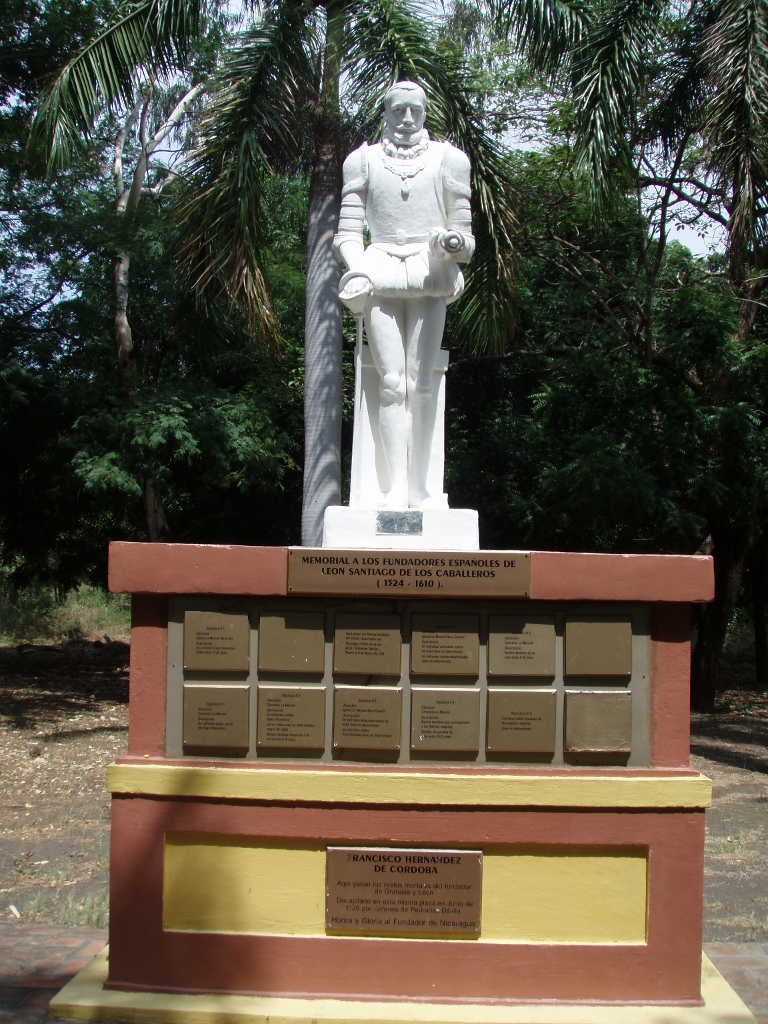 Monument to Francisco Hernández de Córdoba
Monument to Francisco Hernández de Córdoba
The next important structure that one comes across when visiting León Viejo is the Royal Foundry House (Casa de la Fundición). It was right here that one fifth of the gold was measured that was then sent to the Spanish king and this was also the place where the indigenous slaves used to be sold.
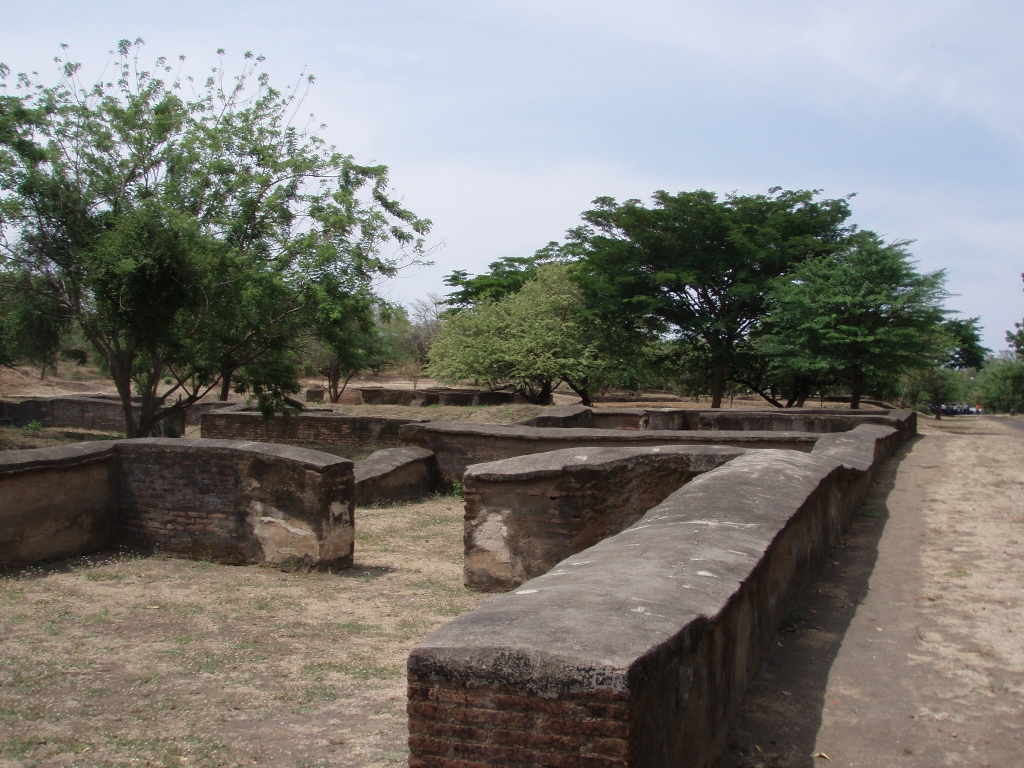 Remains of the Royal Foundry House
Remains of the Royal Foundry House
The buildings in León Viejo were mostly made of less solid materials and only several of them were made of longer-lasting materials. These were the churches and houses of the governor and some wealthier residents, so the walk around the site also leads beside the remains of one such residence, but then the visitor comes to the church and monastery of La Merced that is considered as one of the most important edifices within the site.
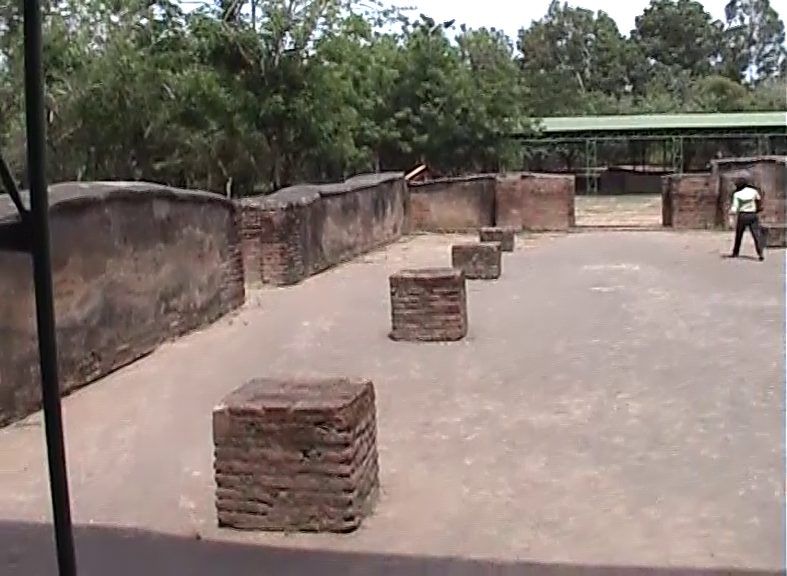 View from the “interior” of the church that belongs to the monastery of La Merced (farther down, below the canopy, there are remains of a house of one of the wealthier residents)
View from the “interior” of the church that belongs to the monastery of La Merced (farther down, below the canopy, there are remains of a house of one of the wealthier residents)
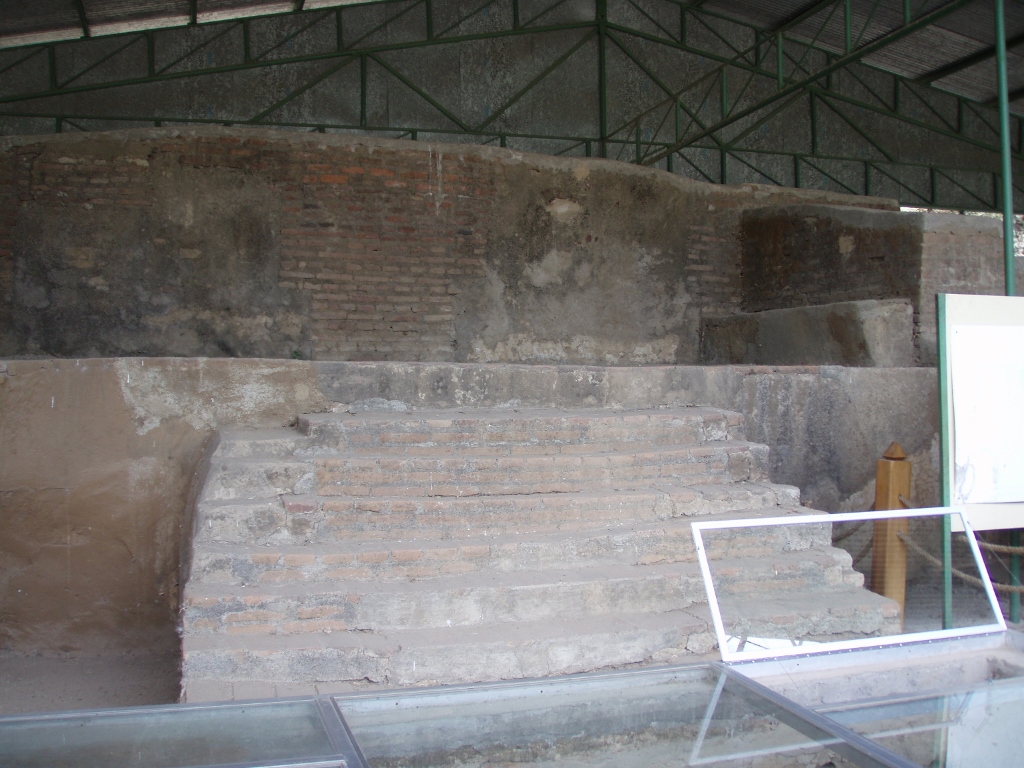 Remains of the altar section of the church of La Merced
Remains of the altar section of the church of La Merced
It was exactly here within the remnants of La Merced church that the mortal remains of the founder, de Cordóba, were found, as well as those of the man who ordered his execution, Pedro Arias de Ávila. By the way, the latter is the founder of Panama City and the historians traditionally depict him as a very cruel man and in an extremely negative light. His remains were also placed under the monument at the entrance into the site.
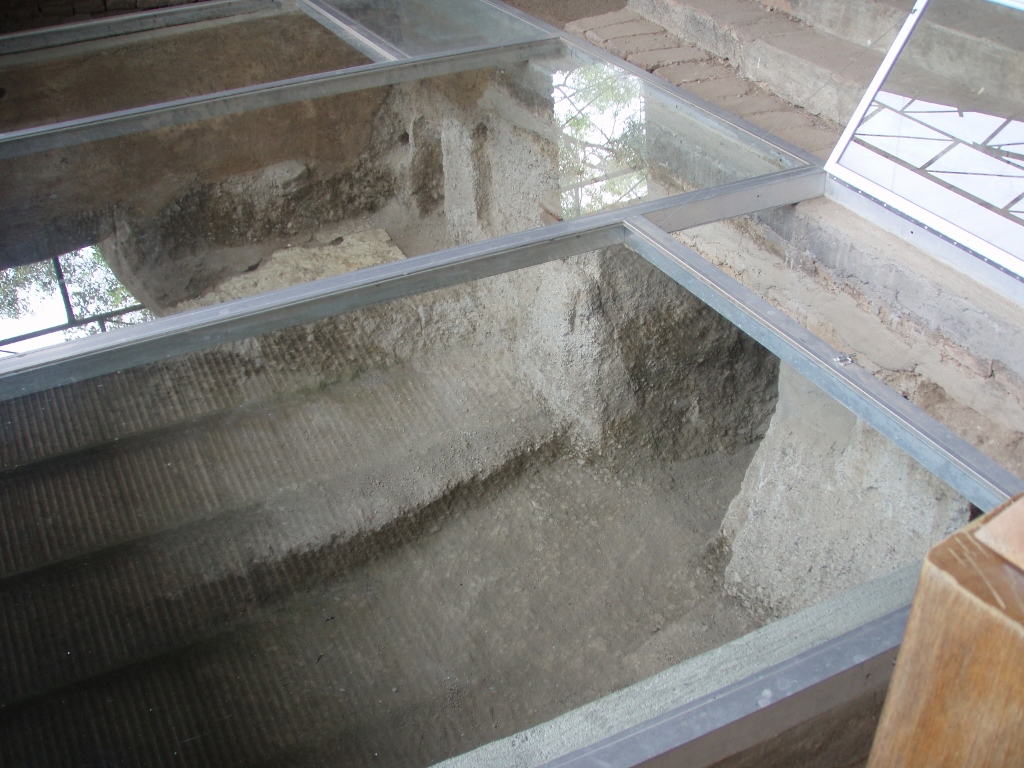 The crypts under the floor of La Merced church are now protected by thick glass
The crypts under the floor of La Merced church are now protected by thick glass
Then we visited the remains of La Merced monastery. Since back in 2008 I could not make panoramic photos, here are a couple of photographs to illustrate a little better the appearance of these remains.
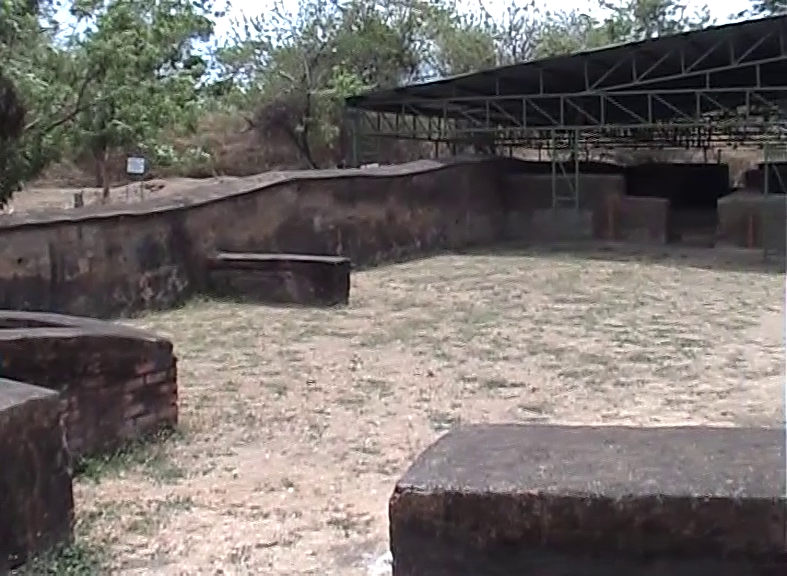 Remains of La Merced monastery
Remains of La Merced monastery
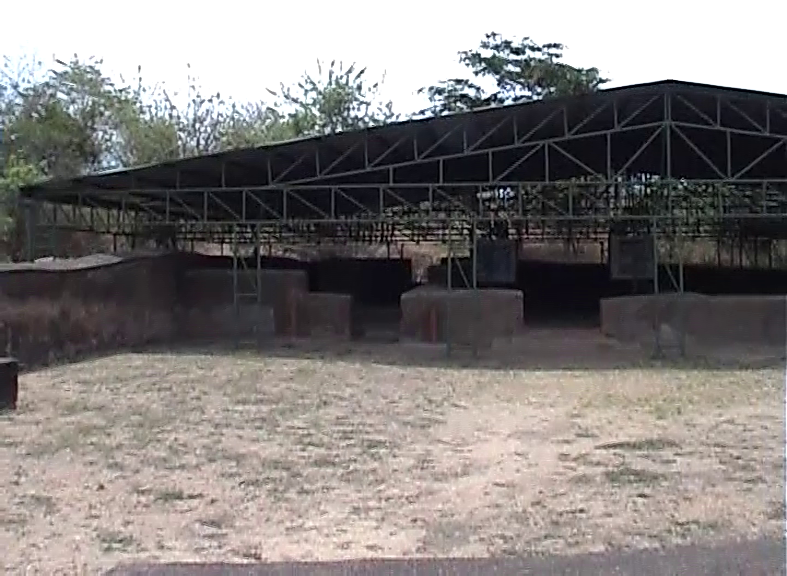 Remains of La Merced monastery
Remains of La Merced monastery
By the way, within the monastery, the researchers found numerous graves with mortal remains both of the Spaniards and of the local population, including all ages and both sexes.
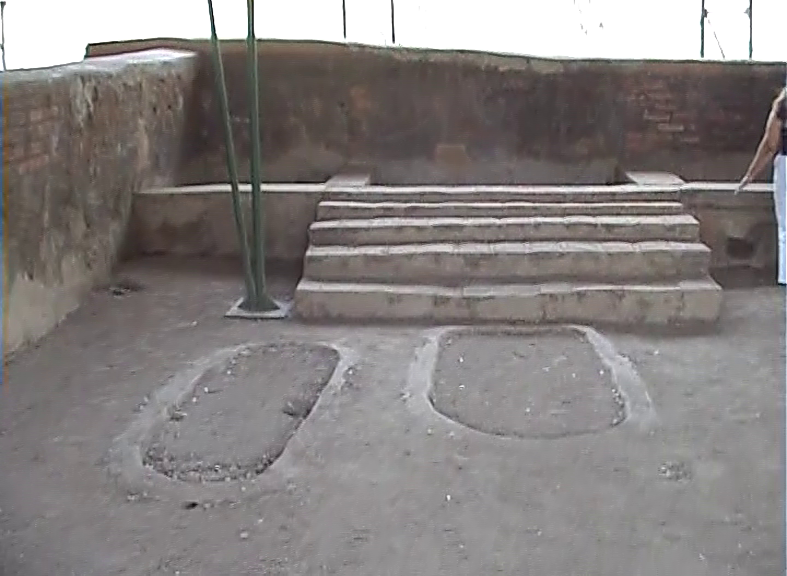 Some of the graves within the remains of La Merced monastery
Some of the graves within the remains of La Merced monastery
I must admit that I did not find the site spectacular, but I was still glad I came here. I have already commented a few times on the UNESCO’s World Heritage List and that it depicts those natural and cultural properties that are the most important in the given country on the basis of the opinions of the experts from that same country. Only later does this go for some kind of international “verification” and confirmation. In comparison to Taj Mahal, Colosseum in Rome, etc., León Viejo may appear almost like a joke, but it certainly is not and is worth the respect, just like every country and every nation in the world with all of their specificities, history and heritage deserve the respect.
And so we came to yet another monument and this was the monument to 18 local warriors killed at the order of that ruthless governor of León Viejo, de Ávila, by being mauled by dogs. At the time when I was writing these stories, I could see on the internet that the monument looks a little different today, better prepped up and painted, but this is what it looked like back in 2008:
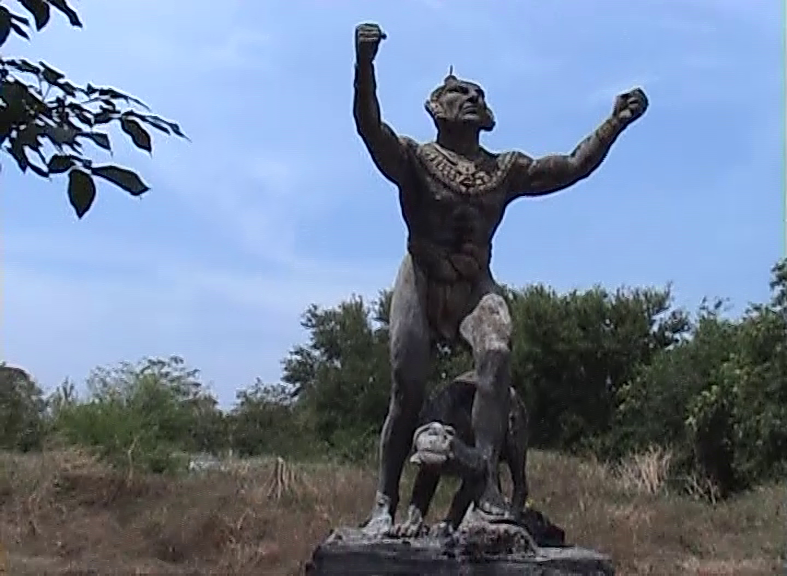 Monument to the especially ruthlessly killed warriors in León Viejo
Monument to the especially ruthlessly killed warriors in León Viejo
Also, at the time, the monument was placed on a concrete pedestal in the middle of which, behind a glass partition, there was an urn with the ashes of some of the excavated bones of the local residents, not necessarily of those particular warriors. In any case, today, this urn cannot be seen on the pedestal of this monument.
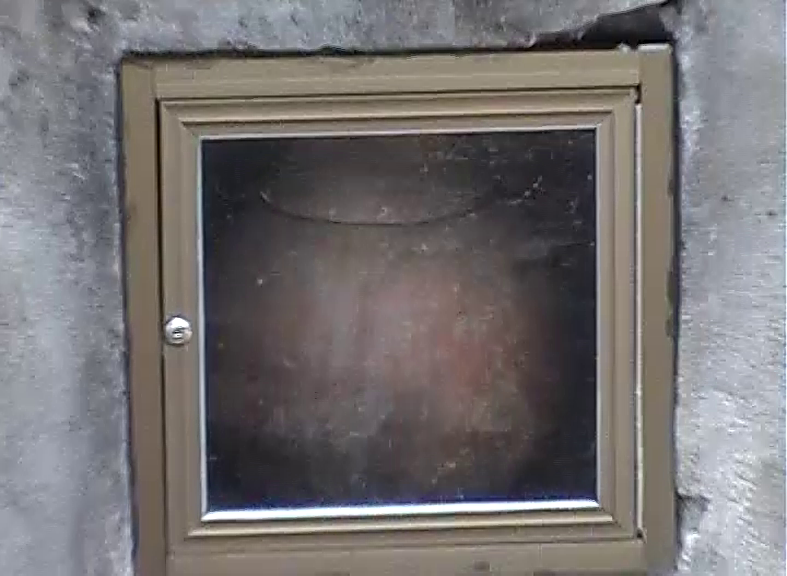 Urn with the ashes within the pedestal of the monument to the killed warriors
Urn with the ashes within the pedestal of the monument to the killed warriors
Those who may be interested in the history of the Spanish conquests in this part of the world and their extreme brutality should read “A Short Account of the Destruction of the Indies,” by Bartolomé de las Casas. I know for a fact that this book had an exceptionally great translation into Serbian (done by a friend of mine), but I’m sure that it has been translated into other languages. However, one should be prepared that not only one can learn a lot, but also that one can be shaken to the core.
But, let me now go back to my visit to the archaeological site of León Viejo in Nicaragua. While strolling around, I passed by some trees that blossomed beautifully at the time of my visit. This was the golden shower (Cassia fistula), a type of short tree that comes from the Indian subcontinent, the flowers of which are sometimes used even as an addition to food, either for humans or for domestic animals, In addition, they are also used in the Ayurvedic medicine, while in the Indian state of Kerala they are the official state flowers that have a religious importance during the Vishu festival. Here, in León Viejo, they served only as a lovely decoration.
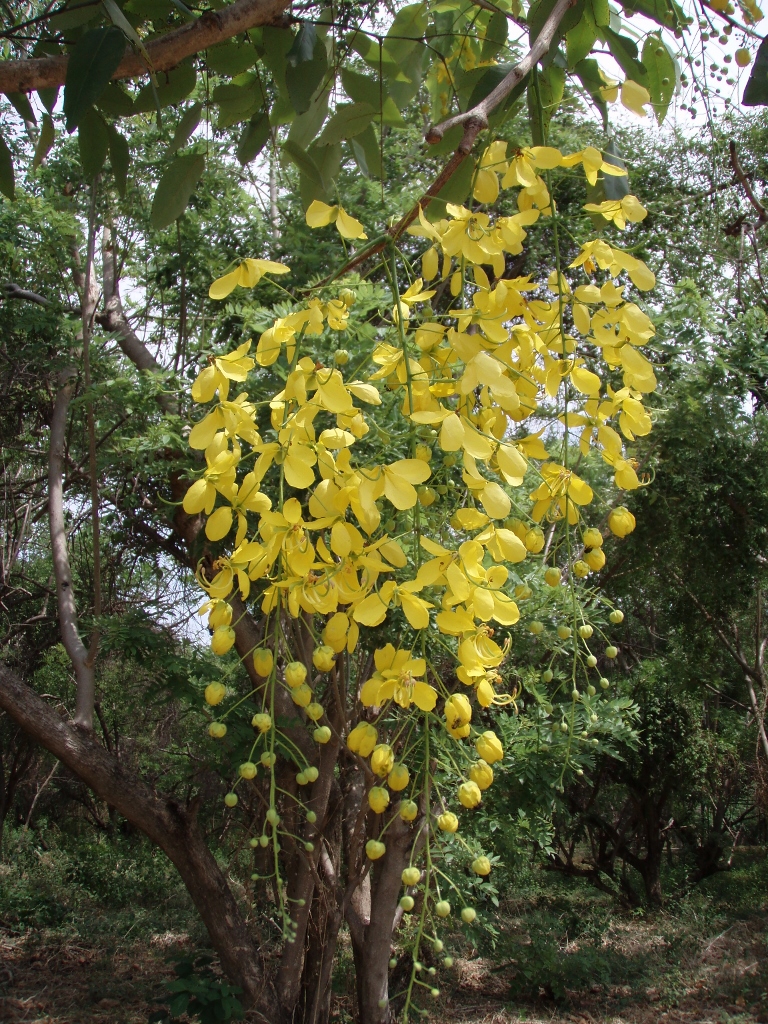 Golden shower’s blossoms
Golden shower’s blossoms
I came to this excursion with two Nicaraguan women, Patricia and Marta. I found Patricia through an internet site and Marta was her friend and co-worker. While walking around the site, I took the opportunity to have photos with them.
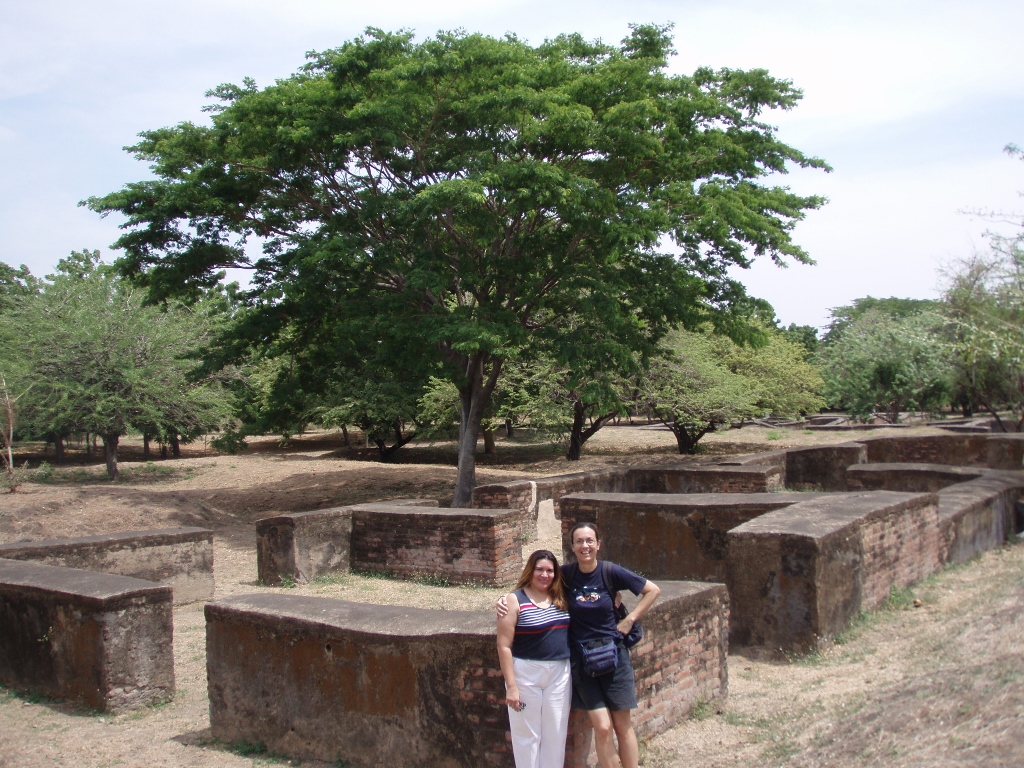 With Marta in León Viejo
With Marta in León Viejo
I had a photo with Patricia taken a little later when we climbed a small elevation from which there is a lovely view at Lake Managua and Momotombo volcano. It was precisely the ash from this, still active, volcano that buried León Viejo after the 1610 earthquake.
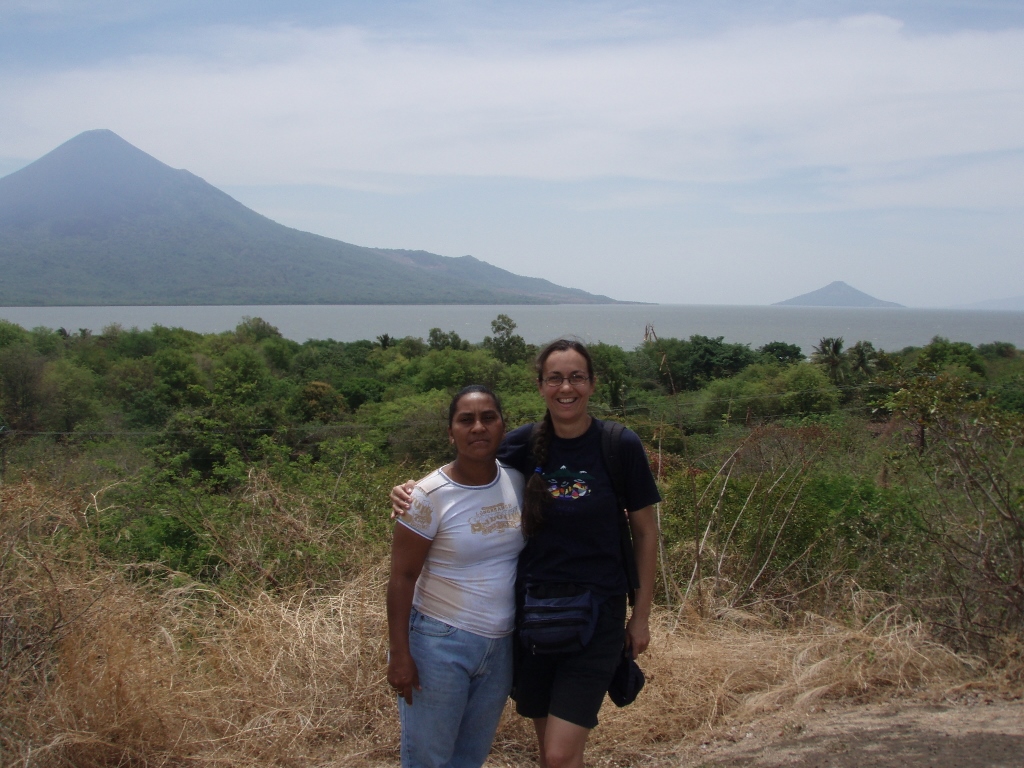 With Patricia in León Viejo
With Patricia in León Viejo
Momotombo volcano, 1297 metres high, may be seen in the photo on the left-hand side, while another smaller volcano (to the right in the photo) rises up from the waters of the lake and it is aptly called – Small Momotombo or Momotombito. It practically creates an uninhabited island of the same name, i.e., Isla Momotombito. I’ve already said that Lake Managua is the second largest in Nicaragua and some parts of the capital Managua lie on its shore.
Here we also finished with the sightseeing of the archaeological site of León Viejo. What is very specific about it is that its historic and culturally valuable remains face regular and serious problems, primarily in the form of hurricanes that almost every few years pass over this area bringing not only strong winds, but also enormous quantities of rain. This all additionally endangers the remains of the old structures, already damaged by the earthquakes, volcanoes and the time, so it is necessary to provide regular and intensive maintenance and restoration.
After the completion of the visit to León Viejo, the three of us started to return to Managua along the same roads and in the same manner (first the taxi and then the inter-city passenger van). At the proposal of Patricia and Marta, we stopped at a very popular place and that was a big restaurant by the road that sold popular Nicaraguan specialties – the quesillo and the tiste.
The quesillo is a type of Nicaraguan fast food: on top of a corn tortilla come pieces of cheese which for this purpose is thin, relatively soft and round like the tortilla, as well as chopped onion mixed with vinegar (traditionally the banana vinegar is used). This is then wrapped, put into a small, narrow plastic bag and covered with some liquid sour cream.
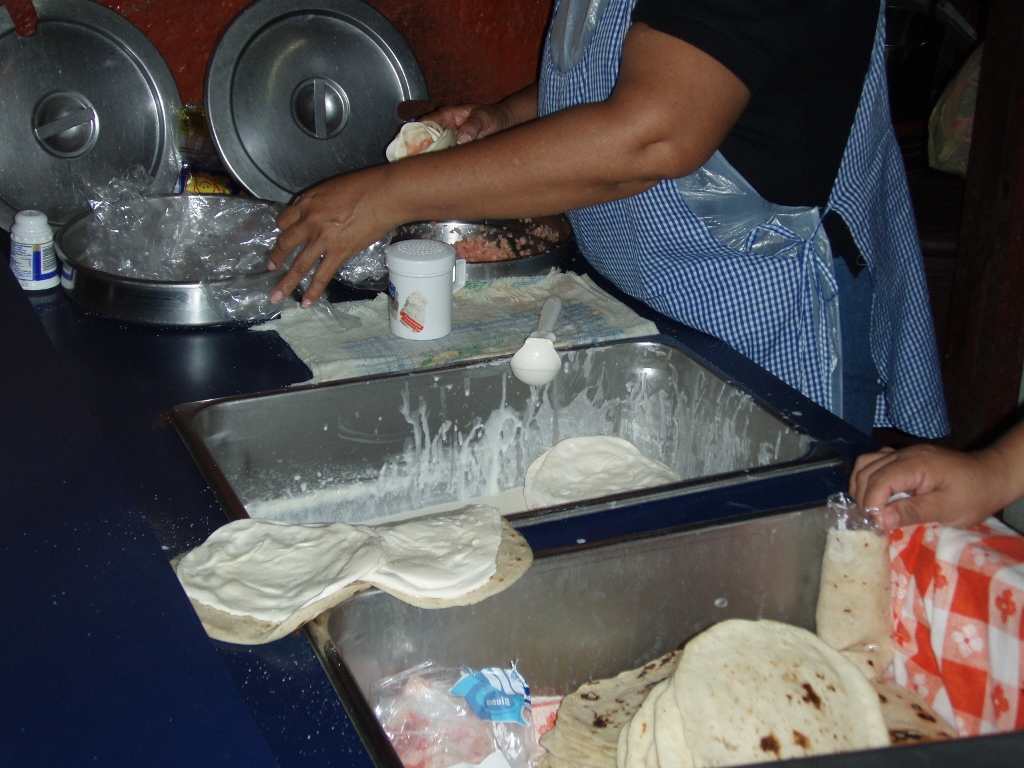 Packing up of quesillos
Packing up of quesillos
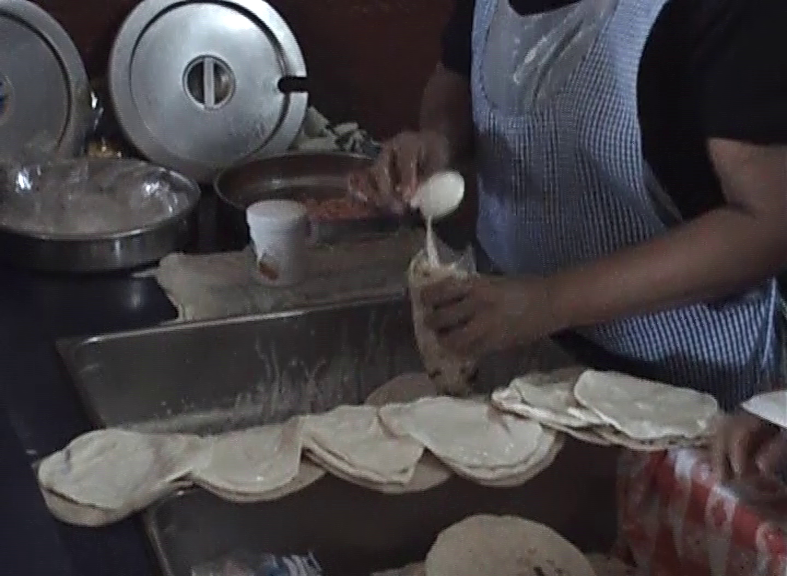 The moment when liquid sour cream is poured over the quesillo already put into the plastic bag
The moment when liquid sour cream is poured over the quesillo already put into the plastic bag
With the quesillo almost obligatorily comes – the tiste. This is a refreshing drink made of maize and cocoa, with addition of seasonings, sugar and water. What makes the tiste even more special are the traditional glasses in which it is most often served and these are in fact decorated dried fruit rinds of the calabash tree (Crescentia cujete) that have been used as drinking vessels ever since the pre-Hispanic times.
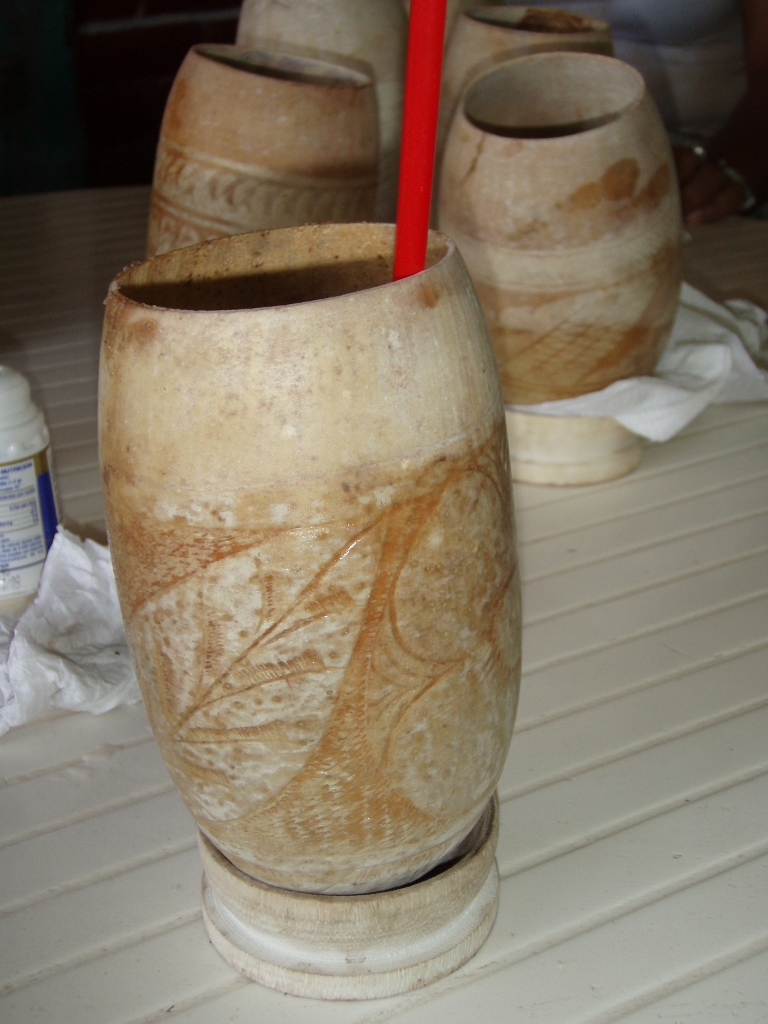 Traditional tiste glass
Traditional tiste glass
Although it is a true privilege to be able to try national specialities in the place recommended by local population and where it is very crowded, which confirms popularity, that is, the quality of the venue, I must admit that I was not really delighted to eat in high heat things that include cheese and liquid sour cream and to take a drink that gets its water from who knows where, but both Patricia and Marta were very keen on bringing me here specifically to try these specialities and I felt a little uncomfortable at the very thought of refusing the kindness. As it would turn out, something in all of this did not agree with my stomach after all and over the next few days I had some intestinal issues. Nothing dramatic and in any case I did bring with me medical drugs for such purposes, but I realised that eating fruits, mango in particular, was not for me these days and to my great disappointment had to avoid them. However, this all calmed down soon enough and in a few days I could continue without any disturbances to devour a naturally ripened mango each day. I loved it.
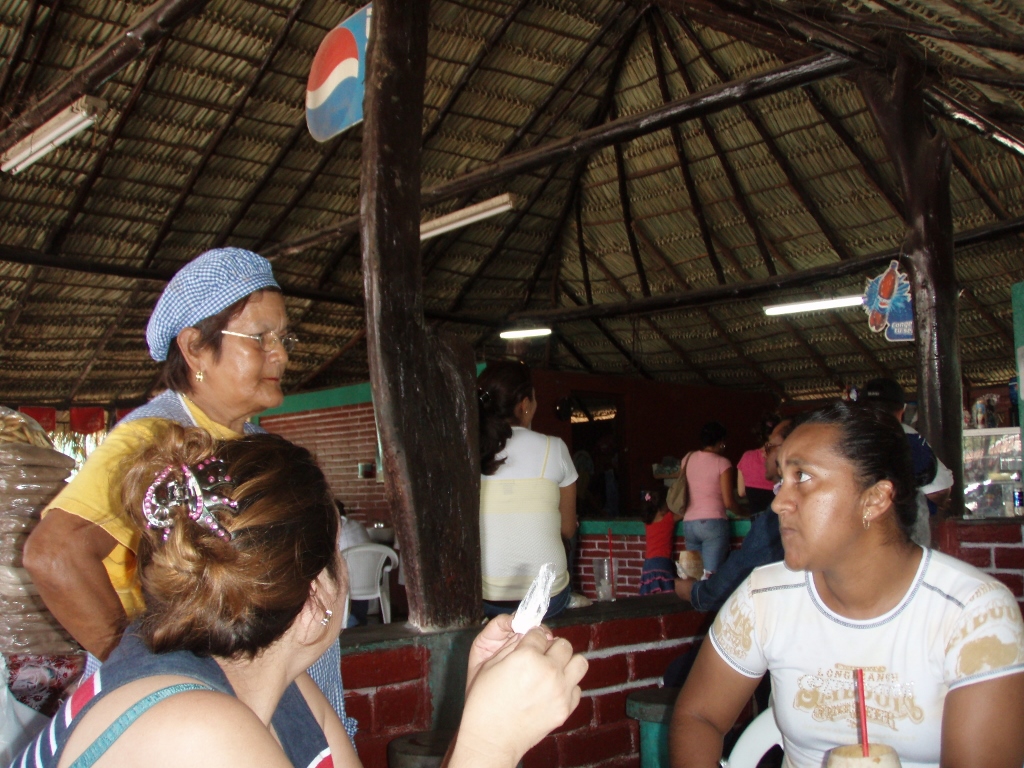 Marta and Patricia talking to a woman working at the restaurant that offered quesillo and tiste
Marta and Patricia talking to a woman working at the restaurant that offered quesillo and tiste
After this break we returned to Managua and went to Silvia’s, another friend of Patricia. Since it was very hot, the decision was to sit on the pavement outside the house, for it was less hot there than in the inner yard, not only because we were sitting in the shade, but also because there was some light breeze outside, albeit not all the time. On the other hand, this did not feel too strange for me. I remember that when I was child and went during summer holidays to visit my grandmother in Leskovac, Serbia, I regularly saw a few elderly women bringing out chairs to the pavement in front of their houses that were across the street from the flat in which my grandma lived and then they would sit there, chat and watch the world go by, and almost certainly they gossiped. Here in Managua, in this early afternoon, nobody walked by, so there was no gossiping material, but we still sat there and posed when Silvia’s son took a photo of us using my camera.
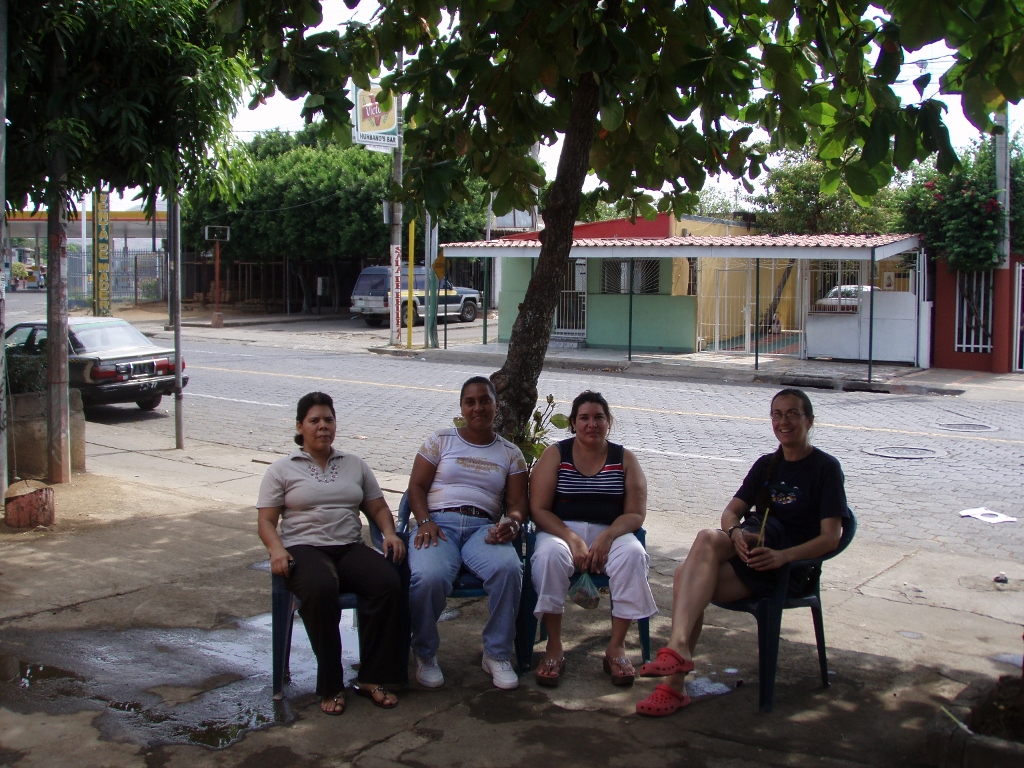 With three Nicaraguan women in front of Silvia’s house
With three Nicaraguan women in front of Silvia’s house
When we cooled down a little, sitting passively in the shade, we were ready to continue with the sightseeing and so we headed for the very centre of Managua. To start with, we passed by a house in which there is a museum of contemporary art in Managua called Julio Cortázar House Museum (Casa Museo Julio Cortázar).
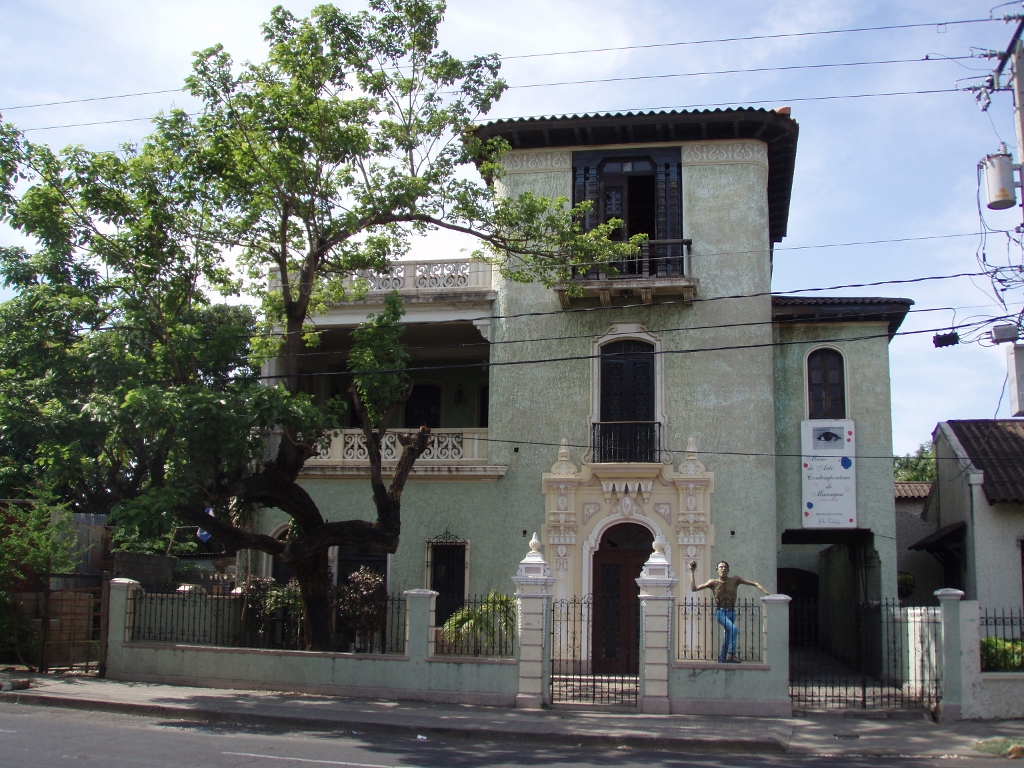 Julio Cortázar House Museum
Julio Cortázar House Museum
The museum has been named after a very influential Argentinian writer Julio Cortázar who was essentially a leftist by his political views and thus, among other things, he supported the Sandinista revolution in Nicaragua during the 1960’s. Also, a year before his death he was given a Nicaraguan medal named after one of the most famous Nicaraguan writers, Rubén Darío, who is considered the father of the literary movement Modernism.
Still, the four of us did not go to this museum, opting rather to walk to the main square in Managua called the Revolution Square (Plaza de la Revolución).
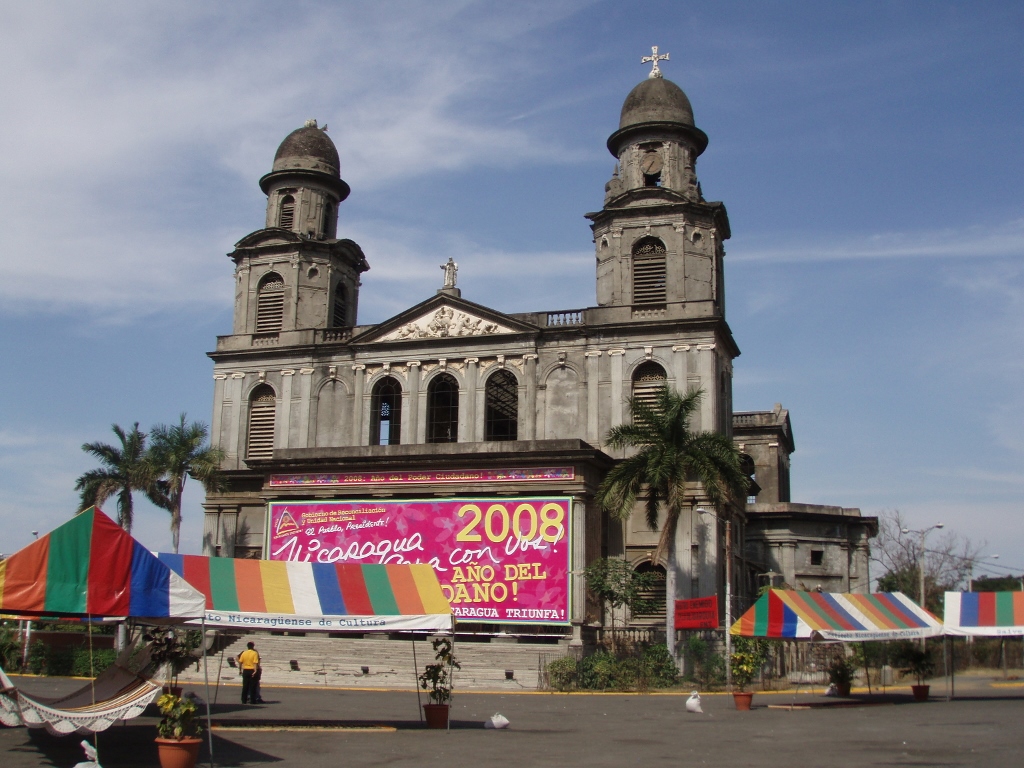 Cathedral in Managua dedicated to St. James the Apostle (Catedral de Santiago Apóstol)
Cathedral in Managua dedicated to St. James the Apostle (Catedral de Santiago Apóstol)